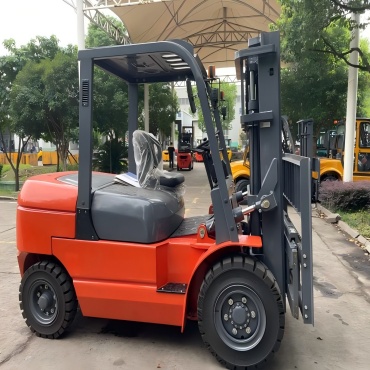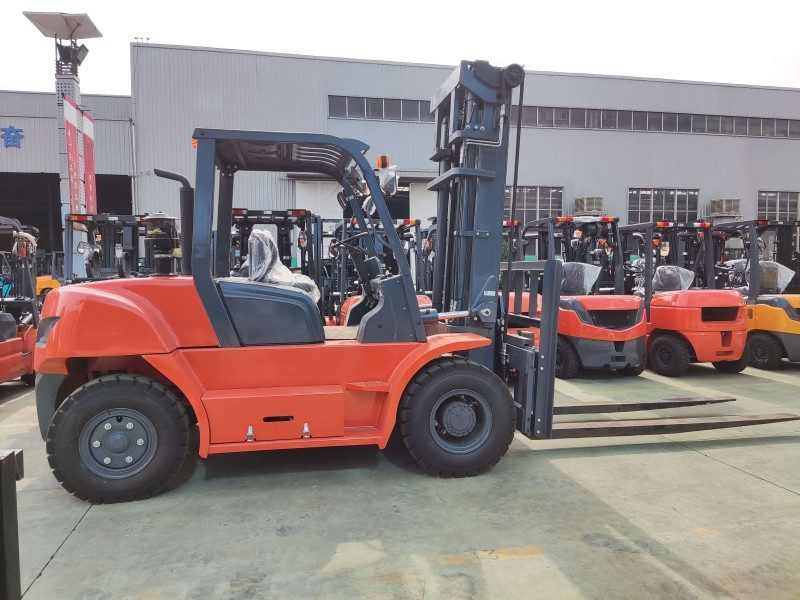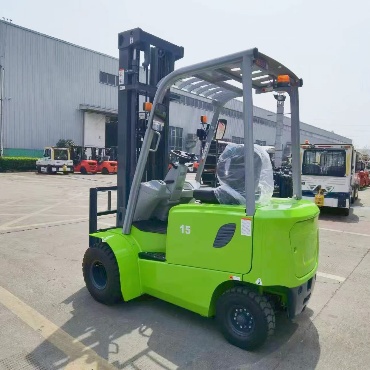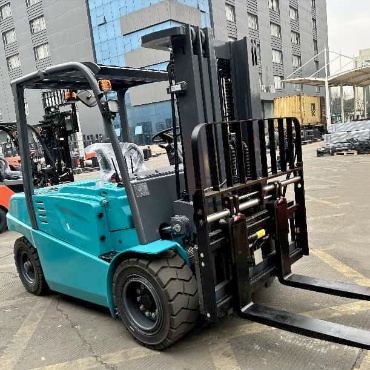- Diesel Forklift
-
- 5 Ton Diesel Forklift with Dual Front Tires and 3 Stage 5m Mast 8000-8800lb Diesel Forklift Truck by FLIFT | Heavy Duty Industrial Forklift 25-30tonne Diesel Forklift 16T Forklift Truck 4.5 Ton Diesel Forklift 48 Ton Diesel Forklift 3 Ton Diesel Forklift 3.5 Ton Diesel Forklift 2.5 Ton Diesel Forklift 33 Ton Diesel Forklift 15 Ton Diesel Forklift 10 Ton Diesel Forklift 8 Ton Diesel Forklift 4 Ton Diesel Forklift 6Ton Forklift 2 Ton Diesel Forklift 1 Ton Diesel Forklift 1.8 Ton Diesel Forklift 1.5 Ton Diesel Forklift 7 ton forklift 35 ton Forklift Rough Terrain Forklift
- Electric Forklift
-
- 3-3.5ton 4 Wheel lithium Forklift Trucks 7000lb high voltage lithium forklift 2.5t electric fork truck with forklift pallet rotator 6000lb-7000lb Lithium electric forklift Narrow Aisle Stand Up Counterbalance Forklift – High Efficiency Warehouse Solution 3.8ton Low Voltage Lithium Battery Forklift 12t Lithium high capacity forklift 12t large capacity electric forklift 8ton Electric Forklift 10t electric forklift truck 25ton Lithium Battery Forklift 7ton Electric Forklift 16-20t Large Capacity Lithium Battery Forklift 2 Ton Electric Forklift 1.8 Ton Electric Forklift 6 Ton Electric Forklift 1.5 Ton Electric Forklift 1.0-1.5 Ton Electric Forklift 2.5 Ton Electric Forklift 3.5 Ton Electric Forklift 4.0-4.5 Ton Electric Forklift 5 Ton Electric Forklift 3 Ton Electric Forklift 1.6-1.8Ton Three Wheel Electric Forklift 2 Ton three wheel electric forklift
- Rough Terrain Forklift
-
- 3.5t-4ton 4 wheel drive forklift 7 Ton All Rough Terrain Forklift 2-2.5T Rough Terrain Forklift Truck 4 ton off road forklift truck 3t 4 wheel drive forklift for sale 3.5t Two Wheel Drive Rough terrain forklift 3T Diesel Rough Terrain 2WD Forklift FLIFT 3.5ton all rough terrain forklift for sale 2WD 3t off Road Rough Terrain Forklift
- Electric Reach Truck & Pallet Truck / Pallet Stacker
-
- 5ton end rider electric pallet truck with customized 1.8m fork length 10ton-15ton heavy duty electric pallet truck 2.5ton all terrain electric pallet jack 1.5ton-2ton all terrain electric pallet truck with crane jib Counterbalanced Pallet Stacker 1600 lb to 2000 lb Capacity for Indoor Warehouses Heavy Duty 2T-2.5T Electric Stacker Forklift | High-Performance Stacker Lift High-Capacity 2.5t electric reach truck 1.0t -1.5t Electric Walkie Straddle Stacker 2ton Fully Electric Pallet Stacker 3 stage mast 2ton electric rough terrain pallet stacker 1.5ton off road Rough Terrain Stacker 1.8ton walkie Electric Pallet Truck Jack 1.5Ton Electric Pallet Stacker | Durable Walkie Stacker for Easy Material Handling 1200kg walking type electric pallet stacker 2ton roll and reel electric pallet truck Walkie Counterbalanced Stacker 1500–2000kg Capacity Compact Design 1ton outdoor rough terrain counterbalanced pallet stacker 3300lbs Electric off-road pallet stacker 2t Rough Terrain Pallet Truck Powered Pallet Truck with PU Wheels-2000kg Electric Pallet Jack 2t Elecric Hand Truck 1.5 Ton Electric Walkie Pallet Truck – Compact Power for Efficient Material Handling 2 Ton Reach Forklift 1.5 Ton Reach Forklift 2Ton -3Ton Electric Pallet Truck Semi-electric Pallet Stacker 1ton-1.6ton 3 Way Pallet Stacker Multi-Directional Sideloader Forklift 4 direction reach truck
- Side Loader Forklift
-
- 8ton multi directional reach truck 5ton Multi Directional Forklift Trucks 8-12ton heavy-duty electric side loader forklift 3-7ton electric sideloader 20ton diesel side loader truck 7 Ton Diesel side loader truck 5t Diesel Side Loader Forklift 12t Diesel Side Loader Forklift 10t Diesel Side Loader Forklift 3t Diesel Side Loader Forklift 6t Diesel Side Loader Forklift
- Towing Tractor
-
- 10t-15t Trailer Moving Tugs 10ton-15ton heavy duty electric tow tractor 6600-8800lb Capacity Electric Tow Tractor 6ton-8ton seated electric tow tractor 2 Ton Electric Tug Tow Tractor 1.0ton-1.5ton Electric Walkie Tow Tractor 3ton-6ton electric tow tractor 20-30KN Diesel Tow Tractor 4000lbs-11000lbs industrial tow tug
- Customization Forklift
-
- 900kg CDD09B Electric Walking Type Counterweight Stacker Professional Walking Type Electric Stacker with Special Attachment 1ton Electric Outdoor Rough Terrain Telescopic Spreader Stacker 4t QDD40 Seated type Electric Tractor QDD60 Seated Type Fully Electric Tractor 3t QDD30C Electric Tractor with Turning Radius 1545mm 2t CQD20A Electric Simple Type Reach Forklift Truck 1.5t CQD15A Simple Type Electric Reach forklift Truck 5t Convertible Seated Electric Flat Truck 3t CBD30Z Electric Vehicle Transfer Truck 1.5t CDD15Y Electric Pallet Stacker (Rough Terrain) 1t CXD10-45 Electric High Lift-Order Picker 2t CQD20S-60 Four-way Walking Type Reach Forklift Truck CDD10A/15A Walking Type Fully Electric Pallet Stacker 3t QDD30A Standing Type Electric Tractor 1t CSD10 Man Mount Three-way Stacker 1.5t AGV type CDD15J-16 Electric Pallet Stacker CBD80 8t Electric Pallet Stacker 6t CBD60 Electric Pallet Stacker CBD120 1.2t Electric Pallet Stacker 2t CDD20D-30 Walking type Electric Pallet Staccker CDD08B-25 Counterweight Electric Pallet Stacker
- Forklift Attachements
-
- Waste Paper Fixture Fixed Short Arm non-sideshifting non-sideshifting Fixed Short Arm non-sideshifting Non-sideshifting Hinged Forks Caton Clamp Rotator non-Sideshifting Tire Clamps Pusher Turning Fork Clamps non-sideshifting Log Holder Sideshifting Broke Paper Clamps Sideshifting Sideshifting Single Load Stabilizer Fork Positioners Single Double Pallet Handler
The importance of forklift collision avoidance systems in intralogistics
Date: 2013-05-12 View:
A forklift is a potentially dangerous piece of machinery - there are some dismal accident statistics to back that up. Every year, forklifts kill approximately 85 people. About 34,900 people are seriously injured in forklift accidents each year, and about 61,800 people are not seriously injured in forklift accidents. Rear collisions have been identified as one of the most common accidents, accounting for 20% of forklift accidents.
While the exact causes of these accidents vary, many could have been detected earlier—and possibly even avoided—if companies had implemented safety measures, such as collision avoidance systems.
Forklifts are often used, for example in the field of logistics. Shelves, machines and large storage spaces can seriously obstruct views. There is a serious risk that warehouse personnel and logistics vehicles are out of the driver's line of sight.
There are often many people in the forklift area, especially electric forklifts, which make little noise during operation. Therefore, when drivers use forklifts, they may encounter certain blind spots, such as intersections, T-junctions, L-junctions, entrances and exits, shelves, etc.
Staff can stray into blind spots. He may not be able to see the backing forklift or hear the forklift moving, there is a danger of a collision with each other, and this is where the forklift collision avoidance system comes in handy.
The collision avoidance warning system increases the safety of vehicles in the logistics sector when handling machinery.
The anti-collision system consists of three parts: the host, the ultrasonic probe and the LED display.
Calculate the distance according to the echo time of the ultrasonic wave and activate the safety warning function. The driver can "see" behind blind spots with audible alerts and a distance estimate shown on the LED display.
The technology helps protect vehicle operators by proactively analyzing and warning them of potentially hazardous situations.
To minimize safety incidents in a fleet, investing in a collision avoidance system is a good place to start.
In most cases, your drivers are transporting hundreds of thousands of dollars worth of cargo in low-visibility weather conditions. Your driver may be driving cautiously to get to his destination safely, but he can only see a few feet ahead. What happens if the car in front of your driver loses traction and slows abruptly to regain control? He collided with another car, sending them both into a ditch.
Fortunately, the driver was not injured, but your vehicle and cargo were severely damaged. Also, your insurance premiums will go up due to accidents. This one accident will cost your company hundreds of thousands of dollars.
However, with a collision avoidance system, you can avoid such situations while keeping life and property safe.
There are several types of collision avoidance systems available for logistics vehicles. They include:
.png)




